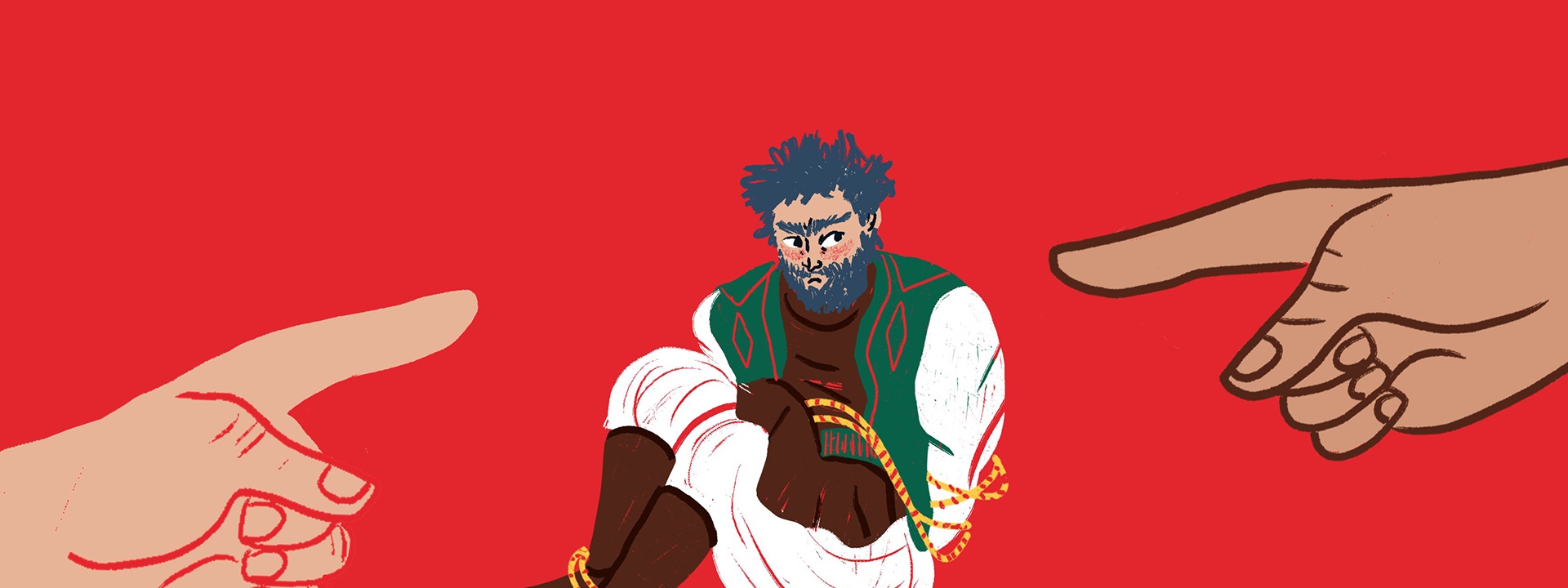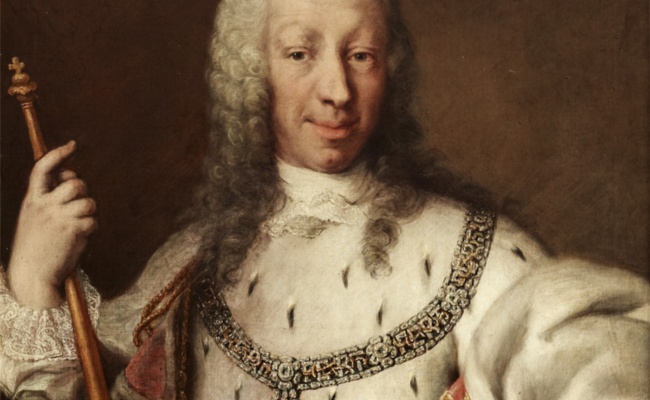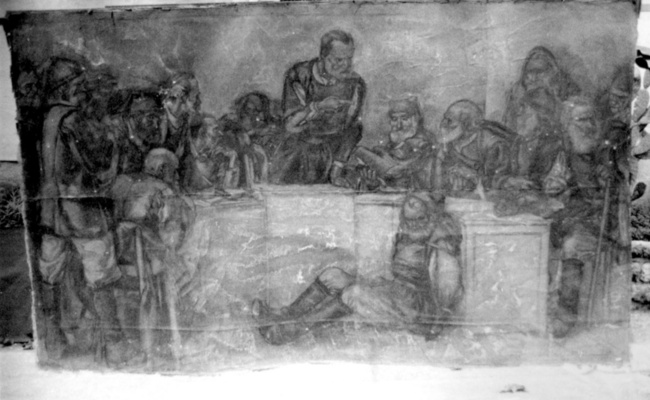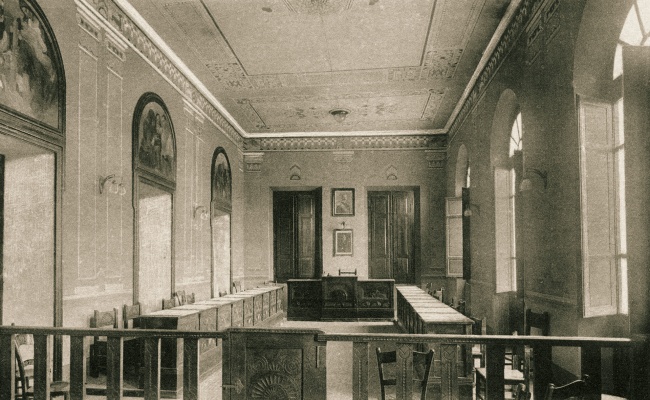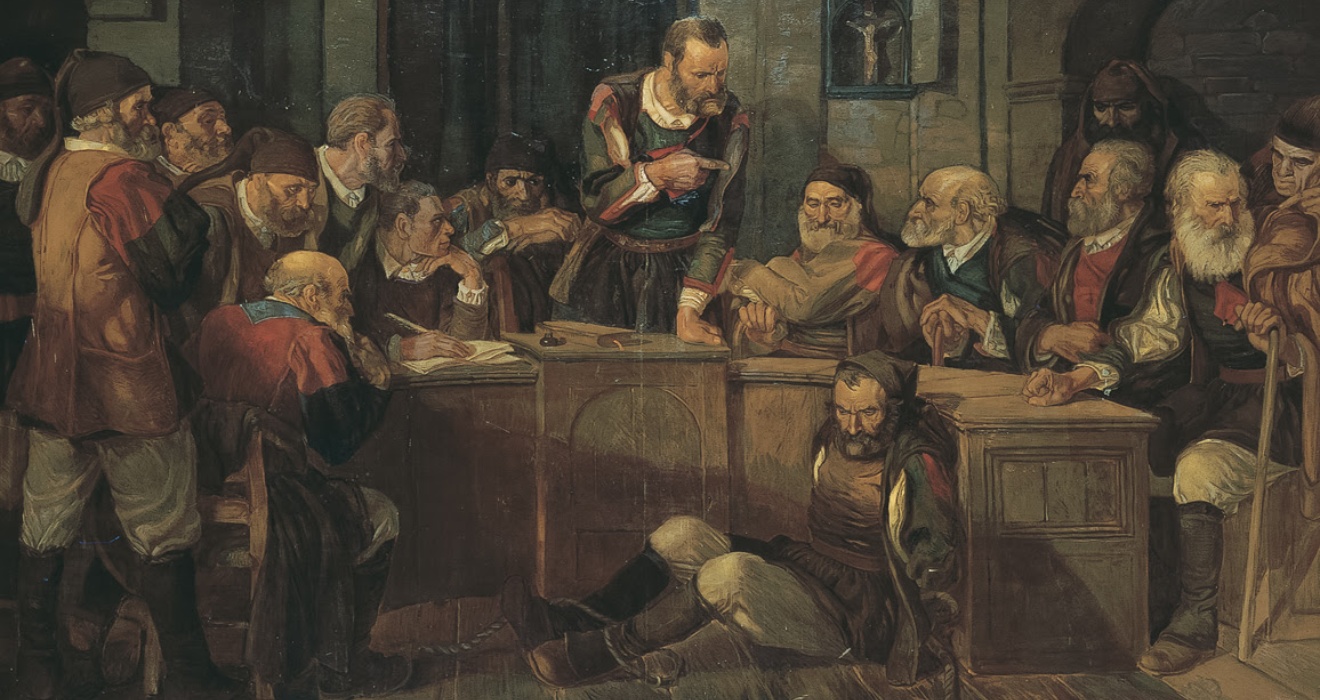In the eighteenth century, Sardinia passed from Spanish domination to Savoy rule. The administrative, social and cultural transformation of Sardinia began to slowly take root, albeit amidst much resistance. Piedmont officials quietly got involved in the feudal and fiscal system of the island, which was still divided into fiefs and ruled by an aristocracy of Spanish origin, which collected taxes and administered justice.
The Expulsion of the Feudal Tax Collector
Description
On 24 September 1771, however, Charles Emmanuel III issued an edict instituting town councils in every municipality, laying the foundations for a way of governing the region entirely unlike that of the previous rulers and ruling class.
And so, the first mayor was elected in Nuoro, Don Antonio Francesco Nieddu, supported by a council of six prominent citizens. Soon after, Giovanni Antonio Moreddu of Fonni, the tax collector for the local Spanish feudal lord, Don Pedro de Alcàntara de Silva de Hìjar, marchese of Orani, presented himself before the council to impose new taxes on vineyards and beehives (and so wine and honey).
The council’s reaction was unanimous: the arrendatore (the Spanish name for the feudal tax collector) was chased away and it was decreed that ‘neither the tax collector nor the marchese himself’ would be henceforth allowed to commit ‘any abuse or the imposition of new taxes in any way or form’ (‘el abuso de ninguna manera de ningnuna, nueva imposición y nuevo pecho né el arrendador né el mismo Marques’).
This episode, which marked the transformation of the political balance in eighteenth-century Sardinia, was cherished as an example of the courage of the people of Nuoro and their will to fight the injustices and abuse of tyrants.
It was the subject chosen by the Orani painter Mario Delitala in 1924 for the competition for the decoration of the Sala Consiliare (council chamber) of Nuoro’s town hall. Delitala’s winning design centred on a large central painting, measuring three-and-a-half metres long and two high, in which the critical moment of the glorious historical episode unfurled before the eyes of his contemporaries, painted as part of a complex decorative programme in the nineteenth-century tradition of grand history painting.
For Delitala, the subject of the Expulsion of the Feudal Tax Collector was an example of ‘freedom, courage and independence’ and merited celebration as a founding moment of the town’s autonomy. The artist made numerous preparatory drawings for the painting, paying special attention to the description of clothing and faces, using contemporary models and portraying them from life.
The decorative programme included side lunettes, which were filled with allegorical scenes of Sardinian life, illustrating the great themes of love, family, homeland and faith.
Unfortunately, the decoration of the Sala Consiliare was taken down, but the lunettes are on view in the collection of Nuoro’s town hall and the central painting, now owned by the Museo MAN, is displayed on special occasions.
 Nuorese Cultural District
Nuorese Cultural District